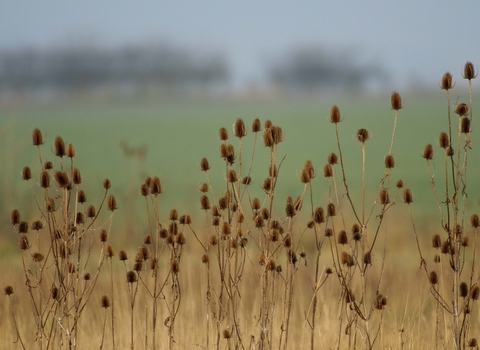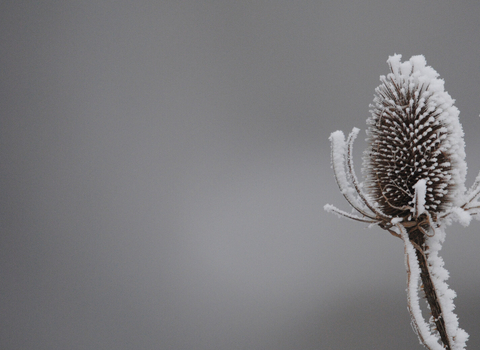
©Chris Gomersall/2020VISION

teasel by Amy Lewis
Teasel
The brown, oval, spiky seed heads of the teasel are a familiar sight in all kinds of habitats, from grassland to waste ground. They are visited by goldfinches and other birds, so make good garden plants.
Enw gwyddonol
Dipsacus fullonumPryd i'w gweld
January to DecemberGwybodaeth am rywogaethau
Categori
Ystadegau
Height: up to 2mCommon.
